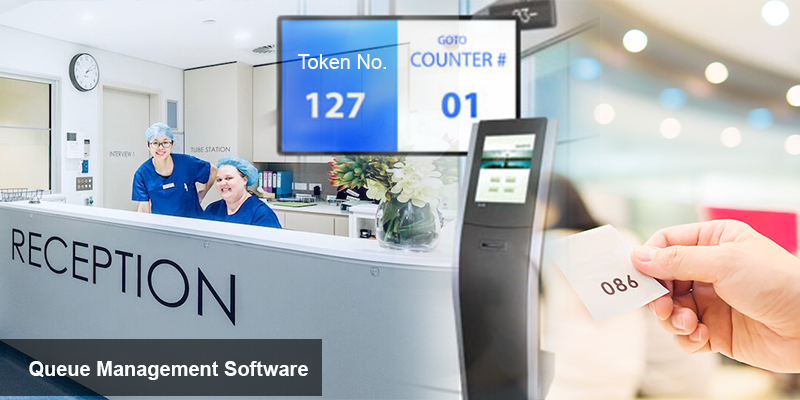Table of Content
Try Vizitor for Free!

Mon, May 13, 2024
Read in 3 minutes
Let’s face it, visiting a hospital is rarely a pleasant experience. Between feeling unwell, navigating unfamiliar surroundings, and the dreaded hospital queue, it can be a stressful ordeal. But what if there was a way to streamline the process, reduce wait times, and improve the overall experience for both patients and staff? Enter the queue management system (QMS), also known as a patient journey management system.
Why are Hospital Queues a Problem?
Hospitals are complex environments where a lot can happen at once. Appointments run late, emergencies arise, and staffing shortages can lead to bottlenecks. This often translates to long queues and frustrated patients. Here are some of the challenges hospitals face:
1. Tight Budgets: Many hospitals struggle to balance improving patient experience with keeping costs down.
2. Limited Resources: Streamlining the entire patient journey, from arrival to discharge, can be difficult with limited staff and equipment.
3. Stressful Work Environment: Long queues and unhappy patients create a stressful atmosphere for staff, impacting morale and productivity.
4. Lack of Data: Without accurate data on patient flow, it’s hard to identify areas for improvement.
How Can a Queue Management System Help?
A QMS is a software and hardware solution designed to orchestrate the flow of patients throughout the hospital. It’s more than just managing queues; it’s about creating a smooth and efficient patient journey. Here’s how:
1. Virtual Queues: Patients can check in remotely or upon arrival, eliminating the need to wait in physical lines.
2. Real-time Updates: Keep patients informed of their place in line and estimated wait times through digital displays or SMS notifications.
3. Appointment Management: Schedule appointments effectively, minimize delays, and ensure patients see the right doctor at the right time.
4. Self-Service Kiosks: Empower patients to check in, update information, and even make payments independently.
5. Data Collection: Gather valuable data on patient flow to identify bottlenecks and optimize processes.
The Benefits of a Queue Management System
The advantages of implementing a QMS in hospitals are numerous. Here are some key benefits:
1. Reduced Costs: Streamlining patient flow minimizes wasted time and resources, leading to cost savings.
2. Improved Patient Experience: Shorter wait times, better communication, and a more relaxed atmosphere lead to happier patients.
3. Increased Staff Satisfaction: A more efficient system reduces stress for staff, improving morale and productivity.
3. Data-Driven Decisions: Data collected by the QMS helps hospitals identify areas for improvement and make data-driven decisions.
Real-World Examples of Success
Hospitals around the world are experiencing significant improvements with QMS implementation.
Here are a few examples:
• A hospital pharmacy slashed waiting times from a staggering 2 hours to just 15 minutes.
• A hospital optimized patient flow, resulting in a 10% reduction in full-time employee (FTE) costs.
• Another hospital saw a 3% increase in the number of patients served within the same physical space.
• A hospital automated a significant portion (25-30%) of reception desk tasks, freeing up staff time for more critical tasks.
The Road to a Smoother Patient Journey
Investing in a QMS is a strategic move for hospitals looking to improve patient experience, staff satisfaction, and overall operational efficiency. By implementing a well-designed system, hospitals can transform the patient journey from a stressful ordeal into a positive and efficient experience.
Looking for More Information?
If you’d like to delve deeper into how QMS can benefit your hospital, there are many resources available online. Consider reaching out to a reputable QMS provider to discuss your specific needs and explore how their solution can transform your patient experience.








